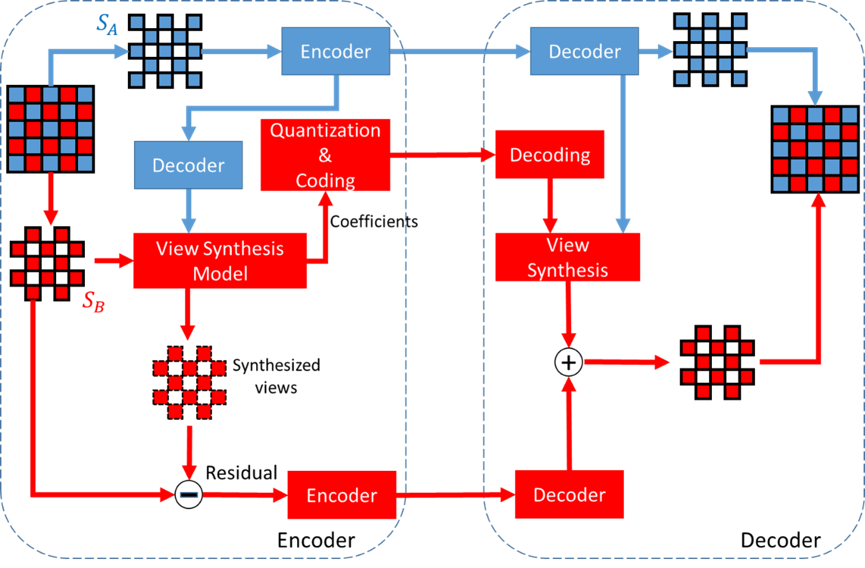Light Field Image Coding via Linear Approximation Prior
Introduction
In recent years, the light field (LF) image as a new imaging modality has attracted much interest. While light field camera records both the luminance and direction of the rays in a scene, large amount of data makes it a great challenge for storage and transmission. Thus an adequate compression scheme is desired. To fully exploit the 4D structure of the light field image, we propose a new prior, called linear approximation prior (LAP) that reveals intrinsic property among the LF sub-views. One light field image is first divided into two parts: the reference views (or coded views) and the intermediate views. The reference views are then rearranged into a pseudo sequence and the video codec, like HEVC are used. Then we use a distortion minimization interpolation (DMI) method to implement the LAP. Our coding framework outperforms the state-of-the-art methods and won the best performance prize in ICIP 2017 grand challenge for light field image coding.
Proposed Codec

As shown in the figure, we first divide the light field image into two subsets: the reference views set SA, and the intermediate views set SB. The SA is then rearranged into a pseudo sequence and compressed by a video encoder. The intermediate views are then synthesized by the decoded reference views with a distortion minimization interpolation:

where A is a matrix consisting of all vectorized views inand b is the vectorized target view to be recovered in the. x denotes the reconstruction coefficients. Then the coefficients are quantized and compressed as a 16-bit lossless JPEG image.
More details can be found in our paper and the code.
Download
You can download the publicly available release of the database by clicking THIS link. Please fill THIS FORM and the password will be sent to you.
Paper
Shengyang Zhao, Zhibo Chen, “Light field image coding via linear approximation prior,” in Image Processing (ICIP), 2017 IEEE International Conference on. IEEE, 2017.